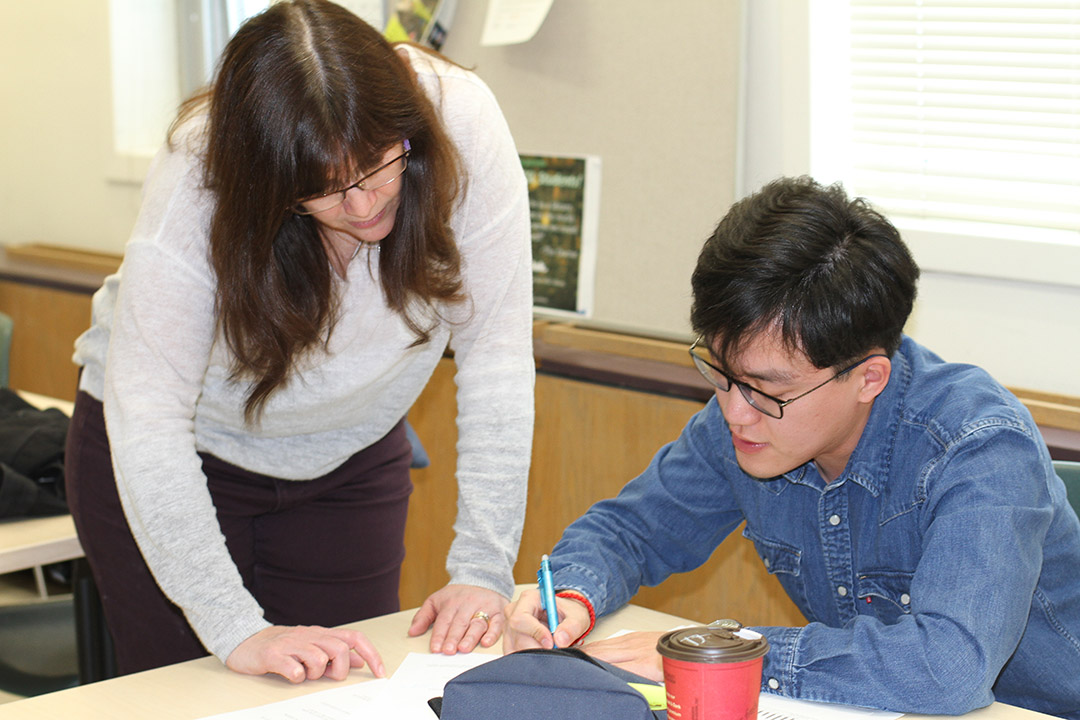
Language program helps U of S students improve English skills
International students studying at a post-secondary institution often face additional challenges when taking university classes, especially if English is not their first language.
By Emily MooneyThe U of S began addressing this challenge in 2012 with U-Bridge, a program in which students take one university course for credit per term with support from a language instructor while working towards meeting U of S language proficiency requirements.
“We’ve been running this program for five years and we’ve never had a student fail their academic class during that time,” said Lisa Krol, U-Bridge co-ordinator and instructor. “Students who complete U-Bridge have a higher retention rate than international students who haven’t taken the class.”
U-Bridge, offered through the U of S Language Centre, provides resources that enable these students to succeed academically. Krol explained that U-Bridge is crucial to the success of international students.
“It literally bridges them to the culture of Western higher education,” said Krol. “The education style here is very different than in countries like China. U-Bridge gives the students time to adjust and change their learning strategies and approach, and I help them to do that.”
Krol’s students in the second level of U-Bridge attend an English as a Second Language (ESL) class five days a week and also attend a regular section of Sociology 112. After their sociology class, the students participate in a follow-up session with Krol on the lecture, followed by more language lessons that focus on listening, speaking, reading and writing skills.
A typical follow-up session involves breaking down parts of the lecture in which the professor used words that the international students may be unfamiliar with or topics specific to Canadian culture were covered, said Krol. Since the ESL instructor attends the academic class with the students, she can address key points and ensure comprehension during this session.
Students have the opportunity to get help with understanding the textbook, and support with improving their grades. They are also able to develop skills such as note-taking, evaluating the credibility of online sources, and writing research papers during these language classes.
“Before this program, we used to get feedback from the departments that many international students were struggling, failing, and getting in trouble with plagiarism,” said Krol. “Now we see students better prepared, less likely to get into what I call academic distress, and they are much less likely to get in trouble with plagiarism because now they know how to research and cite.”
Krol believes that her presence in the sociology class is beneficial not just for the students, but also for university instructors.
“There are fewer problems for professors because students are better able to handle the academic requirements,” said Krol. “The pressure on the professors goes down. If a student is struggling with something, I can teach to that directly. It’s usually not difficulties with understanding the content, but with understanding the language.”
“It’s a good chance to get to know how university works,” said Yisi Feng, a student in the second level of U-Bridge. “Before you go to university, there’s lots of pressure and questions. This is a good way to take a chance with U-Bridge and see how it works, with a teacher to help you.”
Due to the success of U-Bridge, Krol said they are trying to spread word on campus “because we want to help any international students who struggle with language in their classes. We know there are students out there who aren’t accessing resources. We want academic advisors and professors to let students know that they have this support before they give up.”
For more information about U-Bridge, visit uslcstudent.usask.ca/U-Bridge.php.
Emily Mooney is a student intern with the Office of the Vice-Provost Teaching, Learning and Student Experience.

